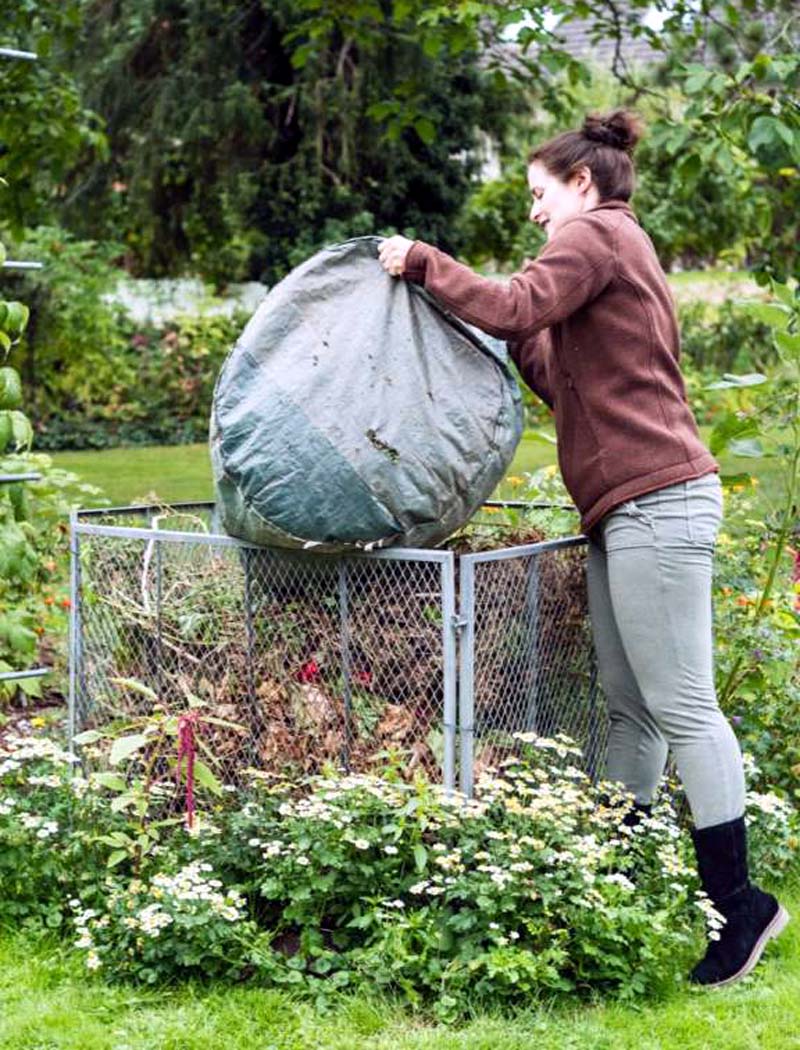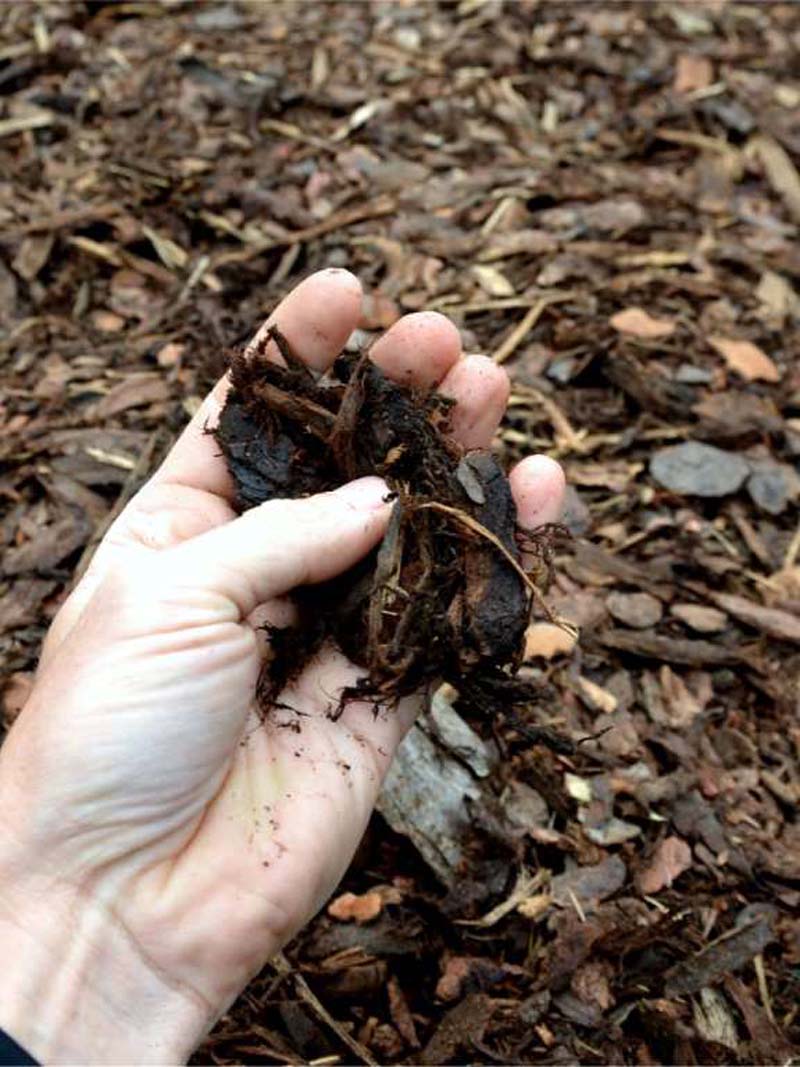![[feature] 10 Ways to Protect Your Soil in Winter](https://blogger.googleusercontent.com/img/b/R29vZ2xl/AVvXsEjyidb6jBTmN35d0FfczUwiMgS6L_nboq06GwBQDEHZJM0t0HqNU8pAyBc5upTcYZPyHPOUI_U_dESWvCVGbOmqbpUe-rEXzdPKq0bGvstWVNxgXyOxlIxjKwWTuxZJ6JGanEi5P-R6W-18/s16000/autos.dearjulius.com.jpg) |
| © DiedovStock |
By Mark Wolfe, Bob Vila
Throughout the growing season, garden plants work together with microbes to break down and use organic matter within the soil. During the off season, unprotected garden beds are at risk of erosion, a process that strips away the topsoil resulting in a loss of nutrients, and soil compaction, which reduces water infiltration and drainage, damaging the soil structure. Over time, this seasonal cycle can leave your garden infertile and unproductive. But this problem is easy to avoid by adopting a few soil friendly habits in the fall.
When the growing season comes to an end, the soil building season begins. This is the time to focus on rebuilding organic content, conserving nutrients, preventing erosion, and avoiding soil compaction.
Remove spent plants at the end of the season and compost them. Composting generates heat that kills insects, disease spores, and weed seeds, and breaks down matter into a soil amendment that retains a bulky structure and nutrient value plants love. Apply the finished compost to your spring and summer garden to promote strong healthy plants.
Tilling opens the soil structure to improve drainage, and stimulates soil microbial activity. Till heavy, compacted soil at the end of the garden season to promote drainage and give cool weather crops a nutrient boost. Fall tillage loosens crusty soil ahead of seeding fall cover crops, and quickly incorporates organic fertilizers and soil amendments such as bone meal, compost, and shredded fall leaves.
Tilling stimulates fungi and bacteria to consume soil organic matter. Sand- or clay-based garden soils that are low in organic matter are degraded by tilling. Instead, after removing summer garden debris, add a layer of compost to the soil surface before planting a fall cover crop or cool weather garden crop. Follow up with a layer of organic mulch to minimize erosion.
In climates where winter temperatures seldom dip below freezing, it is possible to grow cool-weather vegetables like lettuce, spinach, turnips, and kale through the winter. In addition to providing tasty produce, these winter veggies are good for the soil. Actively growing plants eliminate soil compaction and erosion, improve drainage, and add beneficial organic matter to the soil.
Winter garden cover crops, like winter rye, hairy vetch, and winter peas are grown solely for their soil building capabilities. They eliminate erosion and compaction of the soil, and help retain fertility by scavenging nutrients.
The garden is a perfect place to dispose of fallen leaves. Use a lawnmower to mulch and bag the leaves before spreading them in a 3-inch layer on the garden bed. Till them into the garden soil for a boost of trace minerals and a source of earthworm food. Or, pile them up to 2 feet deep or more, shredded or not, and cover them with permeable fabric to hold them in place. The decomposed leaves will be incorporated deeply into the soil by assorted soil dwellers, and the bed will be transformed by spring.
It takes time for bacteria and fungi that live in the soil to turn compost, soil conditioner, and organic fertilizers into a part of the soil. These materials feed soil dwelling microbes which release nutrients that plants can use. In warm weather this happens quickly, but the processes slow down in the cold. Applying these products in late fall ensures that the nutrients will be available for an early spring planting.
Fall is also the time to care for the soil around perennial crops like asparagus, rhubarb, horseradish, and sunchokes. When the plant tops have died back for the season, remove and compost them. Then pull any weeds and apply a fresh layer of organic compost that will slowly replenish the soil all winter long. Finally, mulch around the plants and in the pathways between.
Fall is a good time to use up old compost in the garden, and free up space in the compost bin for new material. Whether you till it in or spread it on the surface, a fall compost application replenishes the soil organic matter that was used up during the growing season. It increases the living space for beneficial soil microbes, and cool weather veggies and winter cover crops grow better with the added nutrients.
It may sound counterintuitive, but let the weeds grow in fall and winter. Cool-weather weeds like chickweed and henbit provide a valuable service, similar to cover cropping, by holding the soil in place and scavenging nutrients. Even among the crops you’ve planted they are unlikely to cause real damage. So let them grow until late winter, then hoe the tops off and add them to the compost pile.
See more at: Bob Vila
Build Better Soil
 |
| © istock |
Throughout the growing season, garden plants work together with microbes to break down and use organic matter within the soil. During the off season, unprotected garden beds are at risk of erosion, a process that strips away the topsoil resulting in a loss of nutrients, and soil compaction, which reduces water infiltration and drainage, damaging the soil structure. Over time, this seasonal cycle can leave your garden infertile and unproductive. But this problem is easy to avoid by adopting a few soil friendly habits in the fall.
When the growing season comes to an end, the soil building season begins. This is the time to focus on rebuilding organic content, conserving nutrients, preventing erosion, and avoiding soil compaction.
Dispose of Old Garden Debris
 |
| © istock |
Remove spent plants at the end of the season and compost them. Composting generates heat that kills insects, disease spores, and weed seeds, and breaks down matter into a soil amendment that retains a bulky structure and nutrient value plants love. Apply the finished compost to your spring and summer garden to promote strong healthy plants.
Till The Garden
 |
| © istock |
Tilling opens the soil structure to improve drainage, and stimulates soil microbial activity. Till heavy, compacted soil at the end of the garden season to promote drainage and give cool weather crops a nutrient boost. Fall tillage loosens crusty soil ahead of seeding fall cover crops, and quickly incorporates organic fertilizers and soil amendments such as bone meal, compost, and shredded fall leaves.
Use The No-Till Method
 |
| © istock |
Tilling stimulates fungi and bacteria to consume soil organic matter. Sand- or clay-based garden soils that are low in organic matter are degraded by tilling. Instead, after removing summer garden debris, add a layer of compost to the soil surface before planting a fall cover crop or cool weather garden crop. Follow up with a layer of organic mulch to minimize erosion.
Plant a Cool Weather Garden Crop
 |
| © istock |
In climates where winter temperatures seldom dip below freezing, it is possible to grow cool-weather vegetables like lettuce, spinach, turnips, and kale through the winter. In addition to providing tasty produce, these winter veggies are good for the soil. Actively growing plants eliminate soil compaction and erosion, improve drainage, and add beneficial organic matter to the soil.
Plant a Cover Crop
 |
| © istock |
Winter garden cover crops, like winter rye, hairy vetch, and winter peas are grown solely for their soil building capabilities. They eliminate erosion and compaction of the soil, and help retain fertility by scavenging nutrients.
Recycle Fallen Leaves
 |
| © istock |
The garden is a perfect place to dispose of fallen leaves. Use a lawnmower to mulch and bag the leaves before spreading them in a 3-inch layer on the garden bed. Till them into the garden soil for a boost of trace minerals and a source of earthworm food. Or, pile them up to 2 feet deep or more, shredded or not, and cover them with permeable fabric to hold them in place. The decomposed leaves will be incorporated deeply into the soil by assorted soil dwellers, and the bed will be transformed by spring.
Add Organic Soil Amendments
 |
| © istock |
It takes time for bacteria and fungi that live in the soil to turn compost, soil conditioner, and organic fertilizers into a part of the soil. These materials feed soil dwelling microbes which release nutrients that plants can use. In warm weather this happens quickly, but the processes slow down in the cold. Applying these products in late fall ensures that the nutrients will be available for an early spring planting.
Mulch Perennial Crops
 |
| © istock |
Fall is also the time to care for the soil around perennial crops like asparagus, rhubarb, horseradish, and sunchokes. When the plant tops have died back for the season, remove and compost them. Then pull any weeds and apply a fresh layer of organic compost that will slowly replenish the soil all winter long. Finally, mulch around the plants and in the pathways between.
Cycle Your Homemade Compost
 |
| © istock |
Fall is a good time to use up old compost in the garden, and free up space in the compost bin for new material. Whether you till it in or spread it on the surface, a fall compost application replenishes the soil organic matter that was used up during the growing season. It increases the living space for beneficial soil microbes, and cool weather veggies and winter cover crops grow better with the added nutrients.
Let The Cool Weather Weeds Grow
 |
| © istock |
It may sound counterintuitive, but let the weeds grow in fall and winter. Cool-weather weeds like chickweed and henbit provide a valuable service, similar to cover cropping, by holding the soil in place and scavenging nutrients. Even among the crops you’ve planted they are unlikely to cause real damage. So let them grow until late winter, then hoe the tops off and add them to the compost pile.
See more at: Bob Vila























